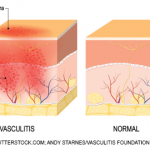SEATTLE—At the first regional vasculitis patient conference ever held in the Pacific Northwest, a panoramic view of Mt. Rainier on a clear January morning set the tone for a day of optimistic talks about recent successes against the various forms of blood vessel inflammation. One attendee at the Jan. 12 conference, sponsored by the Vasculitis…






